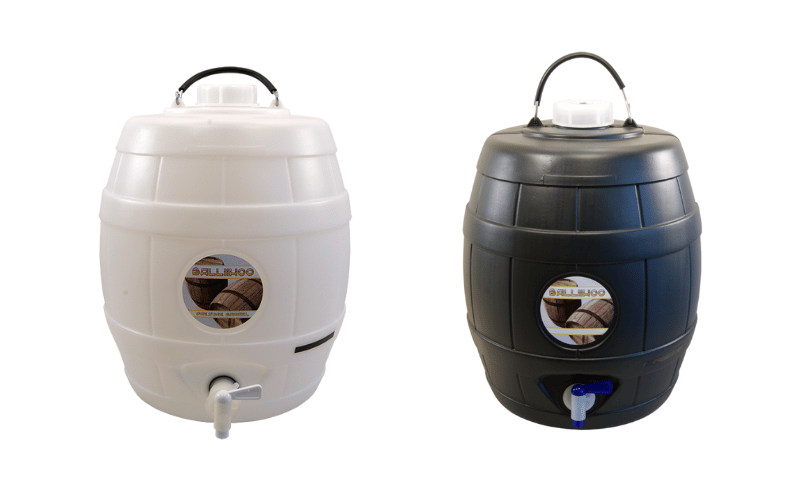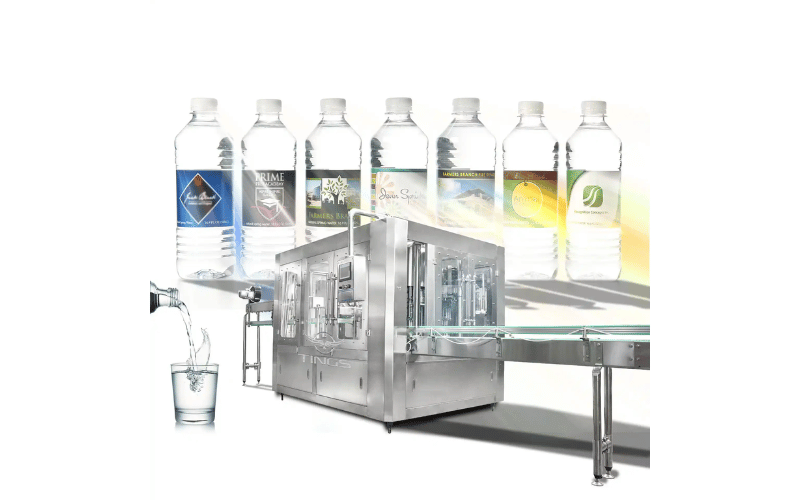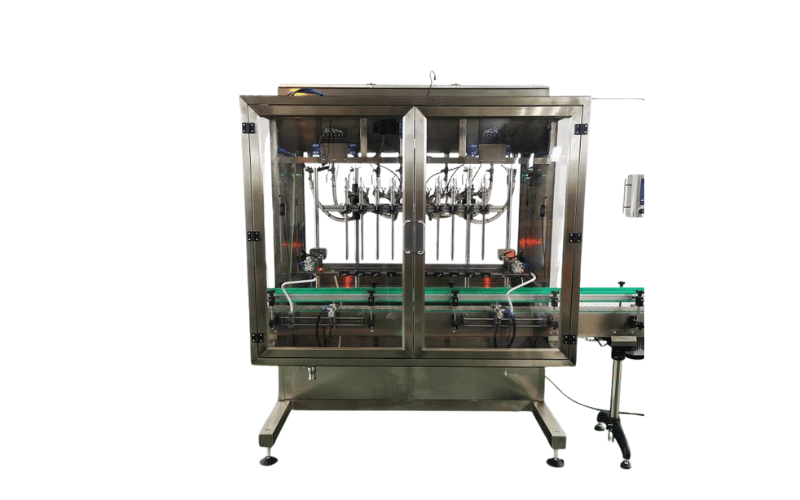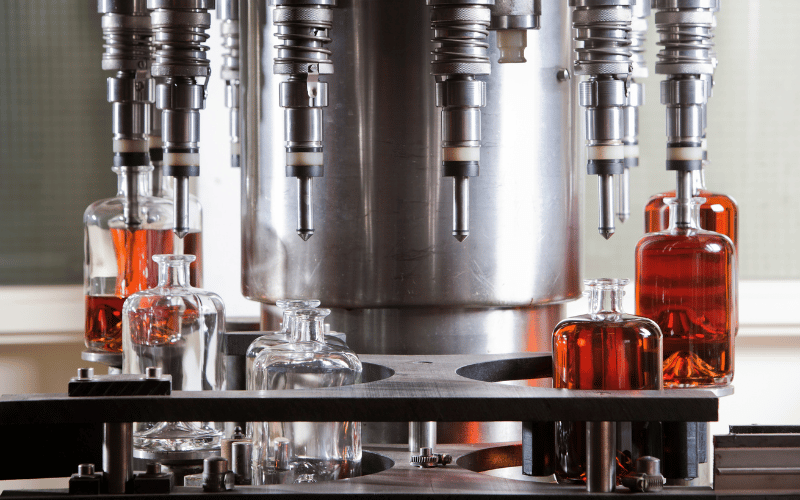Kegging homebrew beer is a practical and efficient way to store, carbonate, and serve your creations while maintaining freshness and flavor. Among the various keg sizes, the 5-gallon keg stands out as a favorite for homebrewers due to its manageable size, versatility, and ease of use. From understanding the components of a keg to mastering the techniques of filling, pressurizing, and carbonating, this guide provides a comprehensive overview of the kegging process. Whether you’re a seasoned brewer or just starting, learning the essentials of kegging can elevate your homebrewing experience and ensure your beer is always ready to enjoy.
Table of Contents
ToggleUnderstanding Kegs
Kegs are essential for storing and dispensing beer, ensuring it remains fresh, carbonated, and ready to serve. They come in various sizes and designs, each suited to different needs, from homebrewing to large-scale commercial use.
Types of Beer Kegs
- Half Barrel Keg: The most common keg size in bars and restaurants, holding 15.5 gallons of beer. It’s ideal for high-volume settings.
- Quarter Barrel Keg: Also known as a pony keg, this holds 7.75 gallons and is perfect for smaller events or venues with limited space.
- Slim Quarter Keg: Similar in capacity to a quarter barrel but with a slimmer design, making it easier to store in tight spaces.
- Mini Keg: A compact option holding 1.32 gallons, often used for homebrewing or small gatherings.
- 5 Gallon Keg: Popular among homebrewers, this size is versatile and easy to handle, making it a favorite for personal use.
Each type of keg serves a specific purpose, allowing users to choose the best option for their needs.
Importance of a 5 Gallon Keg
The 5-gallon keg, often referred to as a Cornelius or Corny keg, is a staple in the homebrewing community. Its importance lies in several key factors:
- Manageable Size: Its compact size makes it easy to transport, store, and handle, even in small spaces.
- Versatility: Suitable for a variety of beverages, including beer, cider, and soda.
- Reusable Design: Made from durable stainless steel, these kegs are built to last and can be reused for years with proper care.
- Ease of Cleaning: The design allows for easy disassembly and cleaning, ensuring hygiene and quality.
- Perfect for Small Batches: Ideal for homebrewers who produce smaller quantities, offering a practical solution for storage and dispensing.
The 5-gallon keg strikes a balance between capacity and convenience, making it a go-to choice for personal and small-scale use.
Components of a Keg
- Body: The main cylindrical container, typically made of stainless steel, which holds the liquid and maintains its carbonation.
- Coupler: The connection point between the keg and the dispensing system, allowing beer to flow out while gas is pumped in.
- Gas Inlet: A valve that introduces CO2 or nitrogen into the keg to maintain pressure and push the liquid out.
- Liquid Out Tube: A dip tube that extends to the bottom of the keg, ensuring all the liquid can be dispensed.
- Pressure Relief Valve: A safety feature that releases excess pressure to prevent damage or leaks.
- Lid or Cap: Seals the keg to keep the contents fresh and prevent contamination.
Each component plays a vital role in the keg’s functionality, ensuring the beverage remains fresh, carbonated, and ready to serve.
Homebrewing Basics
Homebrewing is the art of crafting your own beer at home, allowing you to experiment with flavors, styles, and techniques. It’s a rewarding hobby that combines creativity with science, resulting in a personalized and satisfying beverage.
Ingredients for Homebrew Beer
- Malted Grains: The foundation of beer, malted barley (or other grains) provides the sugars needed for fermentation. Choose different malts to influence flavor, color, and body.
- Hops: These add bitterness, aroma, and flavor to balance the sweetness of the malt. Varieties like Cascade or Saaz offer unique profiles.
- Yeast: The key to fermentation, yeast converts sugars into alcohol and CO2. Ale and lager yeasts are the most common types, each producing distinct characteristics.
- Water: Often overlooked, water quality impacts the final taste. Use filtered or distilled water for the best results.
- Optional Additives: Enhance your brew with ingredients like fruit, spices, or honey for unique flavors.
By combining these core ingredients, you can create a wide range of beer styles, from light ales to rich stouts.
Homebrewing Equipment Needed
- Brew Kettle: A large pot for boiling your ingredients and creating the wort (unfermented beer).
- Fermenter: A sealed container, often with an airlock, where the wort ferments into beer.
- Airlock: A device that allows CO2 to escape during fermentation while keeping contaminants out.
- Hydrometer: Measures the specific gravity of your wort to track fermentation progress and calculate alcohol content.
- Sanitizer: Essential for cleaning all equipment to prevent contamination.
- Siphon or Auto-Siphon: Transfers beer between containers without disturbing sediment.
- Bottles and Caps: For storing your finished beer. A bottle capper is also needed to seal the bottles.
- Thermometer: Monitors temperature during brewing and fermentation, ensuring optimal conditions.
Having the right equipment ensures a smooth brewing process and a high-quality final product.
Fermentation Process
- Prepare the Wort: After boiling the ingredients, cool the wort quickly to a temperature suitable for yeast.
- Transfer to Fermenter: Pour the cooled wort into the fermenter, leaving behind any sediment from the kettle.
- Pitch the Yeast: Add yeast to the wort and seal the fermenter with an airlock.
- Monitor Fermentation: Place the fermenter in a cool, dark location. Fermentation typically lasts 1–2 weeks, during which the yeast converts sugars into alcohol and CO2.
- Check Gravity: Use a hydrometer to measure the specific gravity. When it stabilizes, fermentation is complete.
- Condition the Beer: Transfer the beer to bottles or a keg, adding priming sugar if needed for carbonation. Allow it to condition for 1–2 weeks.
By following these steps, you can transform simple ingredients into a delicious, handcrafted beer.
How to Fill a Keg
Filling a keg with homebrew is a practical way to store and serve your beer while maintaining its freshness and carbonation. By following the right steps, you can ensure a smooth process and a high-quality result.
Preparing Your Keg
- Clean the Keg: Start by thoroughly cleaning the keg to remove any residue or contaminants. Use a keg cleaning solution and a brush to scrub the interior.
- Sanitize the Keg: After cleaning, sanitize the keg to kill any remaining bacteria or yeast. Fill it with a sanitizing solution, let it sit for a few minutes, and then drain completely.
- Inspect the Seals and Valves: Check the O-rings, gaskets, and valves for wear or damage. Replace any faulty parts to ensure a proper seal and prevent leaks.
- Purge with CO2: Before filling, purge the keg with CO2 to remove oxygen. This step helps prevent oxidation, which can affect the flavor of your beer.
Proper preparation ensures your keg is clean, sanitized, and ready to store your homebrew.
Steps to Fill a Keg with Homebrew
- Cool the Beer and Keg: Chill both the beer and the keg to the same temperature (around 32–40°F or 0–4°C). Cold temperatures reduce foaming during transfer.
- Set Up the Siphon: Use a sanitized siphon or auto-siphon to transfer the beer from the fermenter to the keg. Avoid splashing to minimize oxygen exposure.
- Fill the Keg: Slowly siphon the beer into the keg, allowing it to flow gently down the side to reduce turbulence and foam.
- Leave Headspace: Stop filling when the beer reaches about 1–2 inches below the top of the keg. This headspace is necessary for carbonation.
- Seal the Keg: Close the lid securely and ensure the O-ring is properly seated to prevent leaks.
- Purge Again with CO2: After sealing, purge the keg with CO2 to remove any remaining oxygen. Do this by pressurizing the keg and releasing the gas a few times.
Following these steps ensures a clean transfer and preserves the quality of your homebrew.
Avoid Overfilling the Keg
Overfilling a keg can lead to several issues, including difficulty sealing the lid, excessive foaming, and improper carbonation. To avoid overfilling:
- Monitor the Fill Level: Use a flashlight or mark the keg to see when the beer reaches the appropriate level.
- Leave Adequate Headspace: Always leave 1–2 inches of space at the top for gas expansion during carbonation.
- Use a Dip Tube: If your keg has a dip tube, ensure it’s not submerged in foam or liquid during filling.
By avoiding overfilling, you can maintain proper carbonation and ensure your kegged beer is easy to serve and enjoy.
Kegging Techniques
Kegging is a convenient and efficient way to store and serve homebrew beer. By mastering key techniques, you can ensure your beer stays fresh, carbonated, and ready to enjoy.
Pressurizing Your Keg
- Seal the Keg: After filling, securely close the lid and check that the O-ring is properly seated to prevent leaks.
- Connect the CO2 Tank: Attach the CO2 regulator to the keg’s gas inlet. Ensure all connections are tight and secure.
- Set the Pressure: Adjust the regulator to the desired pressure, typically between 10–12 PSI for most beer styles.
- Purge Oxygen: Pressurize the keg briefly, then release the gas using the pressure relief valve. Repeat this process 2–3 times to remove any remaining oxygen.
- Maintain Pressure: Once purged, set the regulator to the serving or carbonation pressure and leave it connected to the keg.
Proper pressurization ensures your beer remains fresh and prevents oxidation.
Carbonation Methods for Homebrew Beer
- Forced Carbonation: The fastest method, where CO2 is directly infused into the beer:
- Set the regulator to 30 PSI and shake the keg gently for 5–10 minutes to speed up absorption.
- Reduce the pressure to serving levels (10–12 PSI) and let the beer rest for 24–48 hours.
- Slow Carbonation: A more gradual approach:
- Set the regulator to 10–12 PSI and leave the keg undisturbed for 7–10 days. This method produces finer, more consistent bubbles.
- Natural Carbonation: Using priming sugar:
- Add dissolved priming sugar to the beer before sealing the keg.
- Store the keg at room temperature for 1–2 weeks to allow natural carbonation to occur.
Each method has its advantages, so choose the one that best fits your timeline and desired carbonation level.
Storing and Serving Keg Beer
- Storage Temperature: Keep the keg at 32–40°F (0–4°C) to maintain freshness and carbonation. Use a kegerator or dedicated fridge for consistent cooling.
- Serving Pressure: Set the CO2 regulator to 10–12 PSI for most beer styles. Adjust slightly for higher or lower carbonation preferences.
- Clean Lines Regularly: Clean the beer lines and tap every 2–3 weeks to prevent buildup and ensure a clean pour.
- Pouring Technique: Hold the glass at a 45-degree angle and open the tap fully to minimize foam. Straighten the glass as it fills to create a proper head.
By following these storage and serving tips, you can enjoy your kegged beer at its best, with perfect carbonation and flavor in every pour.
Common Mistakes to Avoid
Avoiding common mistakes in homebrewing and kegging can save you time, effort, and frustration while ensuring your beer turns out as intended. Here are the most frequent pitfalls and how to prevent them.
Overfilling Issues
- Lack of Headspace: Overfilling a keg leaves no room for gas expansion, leading to poor carbonation and difficulty sealing the lid. Always leave 1–2 inches of headspace at the top of the keg.
- Foaming Problems: Filling the keg too high can cause excessive foaming during serving. Monitor the fill level carefully to avoid this issue.
- Difficulty Sealing: Overfilled kegs may not seal properly, allowing oxygen to enter and spoil the beer. Ensure the lid fits securely and the O-ring is in place.
By maintaining proper fill levels, you can avoid these problems and ensure a smooth kegging process.
Improper Carbonation Techniques
- Over-Carbonation: Setting the CO2 pressure too high or shaking the keg excessively can result in overly fizzy beer that’s difficult to pour. Use a regulator to control pressure and follow recommended carbonation times.
- Under-Carbonation: Not allowing enough time for carbonation or using insufficient CO2 pressure can leave your beer flat. Be patient and ensure the pressure is set correctly for the desired carbonation level.
- Uneven Carbonation: Failing to chill the beer and keg before carbonation can lead to inconsistent results. Always cool both to the same temperature before starting the process.
Proper carbonation techniques ensure your beer has the right level of fizz and enhances the drinking experience.
Sanitation Errors in Homebrewing
- Skipping Sanitation: Neglecting to sanitize equipment can introduce bacteria or wild yeast, leading to off-flavors or spoiled beer. Always sanitize all tools, including fermenters, kegs, and siphons.
- Using Contaminated Water: Rinsing sanitized equipment with unfiltered or unboiled water can reintroduce contaminants. Use distilled or boiled water for rinsing.
- Inadequate Cleaning: Residue from previous batches can harbor bacteria. Thoroughly clean all equipment before sanitizing to ensure it’s free of debris.
- Reusing Dirty O-Rings or Gaskets: Old or dirty seals can compromise sanitation. Inspect and replace these parts regularly to maintain a clean system.
By prioritizing sanitation, you can prevent contamination and ensure your beer tastes as good as it should.
Frequently Asked Questions
Q: How do I fill a keg with homebrew?
A: To fill a keg with homebrew, start by thoroughly cleaning and sanitizing the keg, including all parts like the dip tube and coupler. Use a sanitized siphon or pump to transfer your beer from the fermenter to the keg. Leave 1–2 inches of headspace at the top to allow for proper carbonation.
Q: What is the best way to pressurize a keg?
A: To pressurize a keg, connect your CO2 tank and set the regulator to 10–14 psi, depending on the beer style. After filling the keg, purge the air by briefly pressurizing and releasing CO2 a few times. This creates the ideal environment for carbonation.
Q: How do I avoid overfilling my keg?
A: To avoid overfilling, monitor the beer level closely as you transfer it. Stop filling when the beer reaches 1–2 inches below the top of the keg. Using a sight gauge or measuring the volume can help you track the fill level accurately.
Q: What is the purpose of the relief valve on a keg?
A: The relief valve releases excess pressure from the keg to prevent damage or leaks. It acts as a safety feature, ensuring the keg doesn’t over-pressurize. Always check that the relief valve is working properly before filling your keg.
Q: How do I sanitize my keg before filling?
A: Disassemble all removable parts and soak them in a sanitizer solution. Fill the keg with sanitizer, ensuring it contacts all surfaces, and let it sit for the recommended time. Drain the sanitizer completely and allow the keg to air dry before filling it with beer.
Q: Can I use a siphon to fill my keg?
A: Yes, you can use a siphon to fill your keg. An auto-siphon is especially helpful for transferring beer without introducing oxygen. Make sure the siphon is sanitized, and transfer the beer gently to avoid splashing or foam.
Q: How do I check for leaks after filling my keg?
A: After filling, spray soapy water around the keg’s connections and valves. If bubbles form, it indicates a leak. Tighten the connections or replace gaskets as needed to ensure a proper seal and prevent CO2 loss.
Q: What type of keg should I use for homebrewing?
A: Cornelius (corny) kegs are the most popular choice for homebrewing due to their ease of use, manageable size, and ability to carbonate beer effectively. Sanke kegs are another option, often used for commercial setups, but they require additional equipment for cleaning and filling.
Q: How much CO2 pressure is needed for carbonating my keg beer?
A: The ideal CO2 pressure for carbonating keg beer is typically 10–14 psi, depending on the beer style and keg temperature. Adjust the regulator accordingly and allow enough time for the beer to carbonate fully before serving.
Concluding Summary:
Kegging offers homebrewers a convenient and reliable way to store and serve beer while preserving its quality and carbonation. By properly cleaning, sanitizing, and filling your keg, you can avoid common pitfalls like overfilling or improper carbonation. Techniques such as forced or natural carbonation allow you to tailor the process to your preferences, while proper storage and serving practices ensure every pour is fresh and flavorful. With the right equipment, attention to detail, and a commitment to sanitation, kegging can transform your homebrewing process, making it more efficient and enjoyable. Cheers to perfectly kegged beer!





